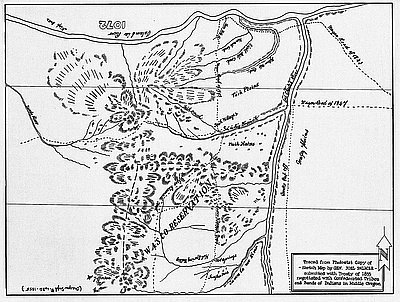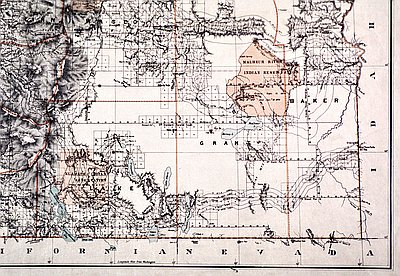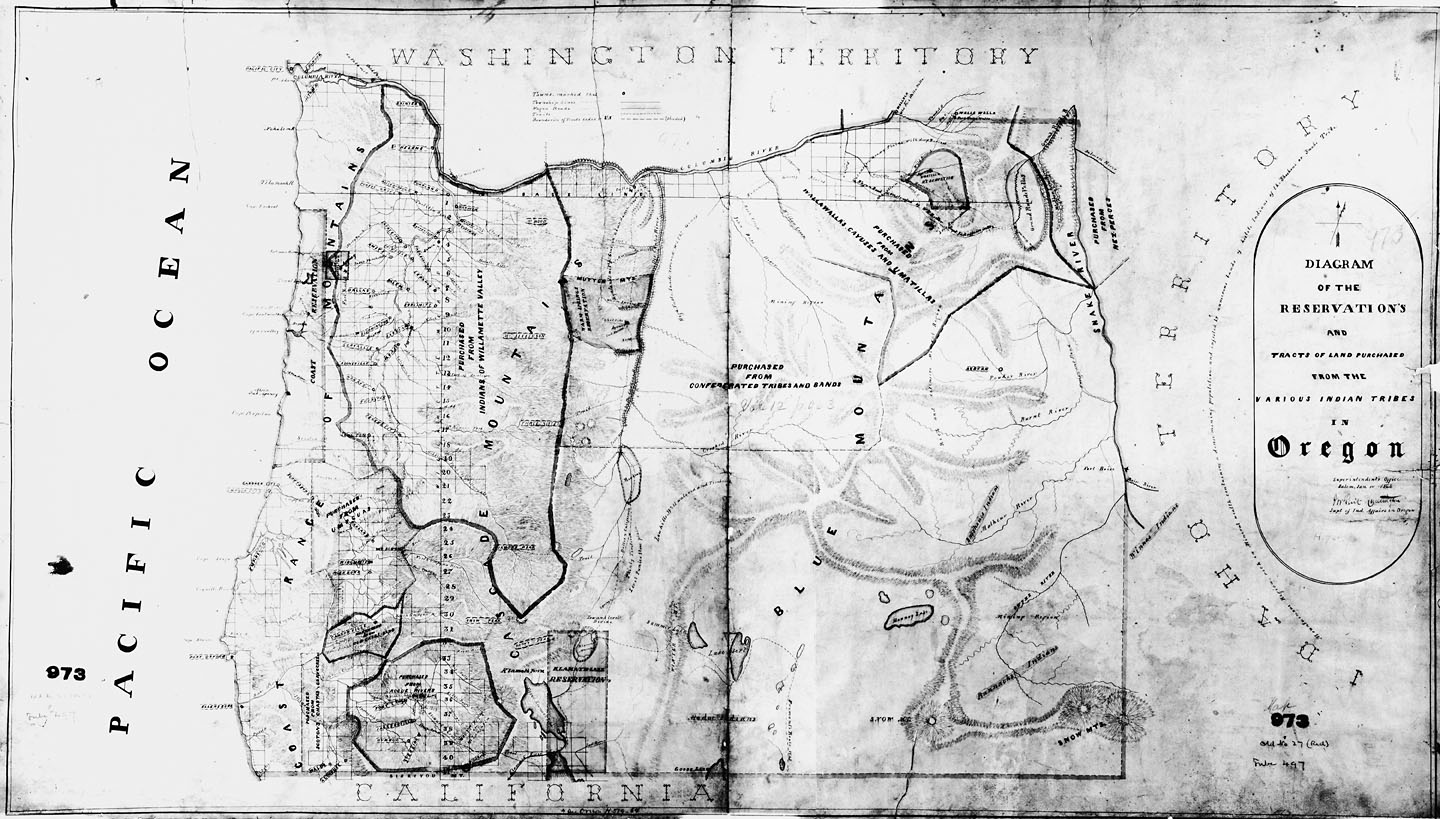- Catalog No. —
- CN 085680
- Date —
- 1864
- Era —
- 1846-1880 (Treaties, Civil War, and Immigration)
- Themes —
- Environment and Natural Resources, Government, Law, and Politics, Native Americans, Oregon Trail and Resettlement
- Credits —
- Oregon Historical Society
- Regions —
- None
- Author —
- Oregon Superintendency of Indian Affairs
Reservations & Tracts of Land Purchased from the Various Indian Tribes
By 1864, Oregon representatives of the U.S. government had bought up most of the traditional tribal land in Oregon. The government recognized Indian ownership of the land and had tried to gain legal access to it through treaties. Beginning with the 1851 Champoeg negotiations, Oregon’s Native people often agreed to treaties with government representatives because they believed it might be the only way to retain land for themselves and preserve their right to hunt, fish, and gather food in their usual and accustomed places. Some Indians received payment for the land, and many eventually moved to the reservations, where their land base was greatly diminished. The large number of Euro American settlers to Oregon and the changes they brought to the landscape and the environment greatly reduced the ability of many Indians to live in traditional ways. Many attended reservation schools and adopted some aspects of Euro American land cultivation and animal husbandry. Today, many Oregon Indians continue to fish, hunt, and gather roots and berries as their ancestors did. Modern reservations have sophisticated tribal governments that manage natural resources, lease Indian land, operate businesses, engage in state and federal politics, and provide members with a variety of human resource services.
Written by Kathy Tucker, © Oregon Historical Society, 2002.
Related Historical Records
-
Wasco (Warm Springs) Reservation Map, 1855
From 1854 to 1855, Joel Palmer, the superintendent of Indian affairs for Oregon Territory, negotiated nine treaties between Pacific Northwest Indians and the U.S. government. Many Indians agreed to …

-
Treaties and Reservations
By the early 1850s, Euro-Americans were moving into the Oregon Territory in ever-greater numbers. Even though Congress had acknowledged Indian title to their lands in the 1848 Organic …
-
Malheur Indian Reservation
This detail from an 1879 General Land Office map shows the Malheur Indian Reservation in southeastern Oregon. An 1872 executive order by President Ulysses S. Grant established the …

